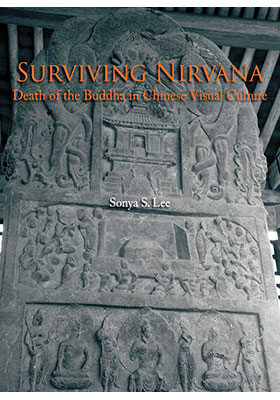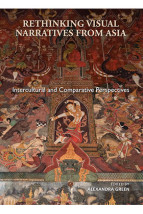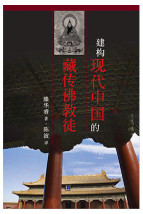Surviving Nirvana
Death of the Buddha in Chinese Visual Culture
(涅槃:中國視覺文化下佛陀的修證結果)
ISBN : 978-962-209-125-2
March 2010
372 pages, 8″ x 11″, 4 color and 137 b&w illus.; 4 maps; 4 tables
- HK$395.00
Ebooks
Also Available on
The Buddha’s nirvana marks the end of the life of a great spiritual figure and the beginning of Buddhism as a world religion. Surviving Nirvana is the first book in the English language to examine how this historic moment was represented and received in the visual culture of China. It is also a study about a pictorial image that has been in use for over 1,500 years.
Mining a selection of well-documented and well-preserved examples from the sixth to twelfth centuries, Sonya Lee offers a reassessment of medieval Chinese Buddhism by focusing on practices of devotion and image-making that were inspired by the Buddha’s “complete extinction.” The nirvana image, comprised of a reclining Buddha and a mourning audience, was central to defining the local meanings of the nirvana moment in different times and places. The motif’s many guises, whether on a stone stele, inside a pagoda crypt, or as a painted mural in a cave temple, were the product of social interactions, religious institutions, and artistic practices prevalent in a given historical context. They were also cogent responses to the fundamental anxiety about the absence of the Buddha and the prospect of one’s salvation. By reinventing the nirvana image to address its own needs, each community of patrons, makers, and viewers sought to recast the Buddha’s “death” into an allegory of survival that was charged with local pride and contemporary relevance.
Exhaustively researched, this study engages methods and debates from the fields of art history, religion, archaeology, architecture, and East Asian history that are relevant to both scholars and students alike. The many examples analyzed in the book offer well-defined local contexts to discuss broader historical and theoretical issues concerning representation, patronage, religion and politics, family values, and vision.
“Surviving Nirvana is a substantial book on a key subject in Buddhist art. In presenting a history of the nirvana iconography through a set of intensely researched cases, Sonya Lee’s approach is methodologically distinct. Her meticulous study is compelling and intriguing. Introducing a rich body of materials, this book will give students of Buddhist art and culture a solid stepping stone to leap forward.” —Eugene Wang, Harvard University
“Sonya Lee has crafted an excellent, carefully nuanced, and comprehensive study of the powerful symbolism embodied in images of the Buddha’s ‘death’ from the sixth through the twelfth centuries. Lee’s work makes a significant contribution to the ongoing discourse re-assessing the evolution of Chinese Buddhism, now no longer perceived as a mere redaction or adaptation of its Indian antecedent. This important, beautifully illustrated, and thoroughly documented book will certainly become a ‘must’ for serious students of Chinese Buddhism.” —Annette Juliano, Rutgers University







